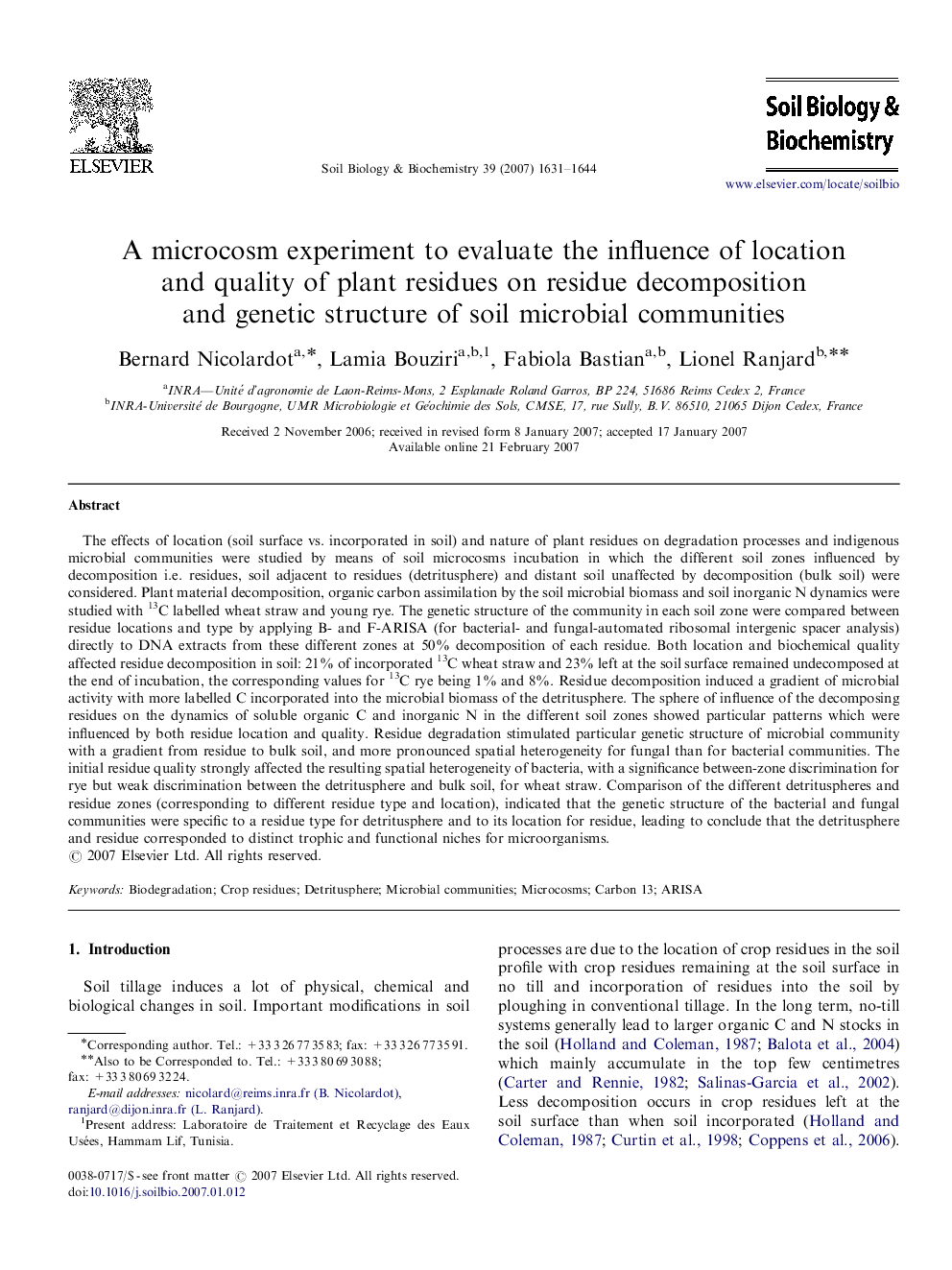| کد مقاله | کد نشریه | سال انتشار | مقاله انگلیسی | نسخه تمام متن |
|---|---|---|---|---|
| 2026227 | 1070023 | 2007 | 14 صفحه PDF | دانلود رایگان |

The effects of location (soil surface vs. incorporated in soil) and nature of plant residues on degradation processes and indigenous microbial communities were studied by means of soil microcosms incubation in which the different soil zones influenced by decomposition i.e. residues, soil adjacent to residues (detritusphere) and distant soil unaffected by decomposition (bulk soil) were considered. Plant material decomposition, organic carbon assimilation by the soil microbial biomass and soil inorganic N dynamics were studied with 13C labelled wheat straw and young rye. The genetic structure of the community in each soil zone were compared between residue locations and type by applying B- and F-ARISA (for bacterial- and fungal-automated ribosomal intergenic spacer analysis) directly to DNA extracts from these different zones at 50% decomposition of each residue. Both location and biochemical quality affected residue decomposition in soil: 21% of incorporated 13C wheat straw and 23% left at the soil surface remained undecomposed at the end of incubation, the corresponding values for 13C rye being 1% and 8%. Residue decomposition induced a gradient of microbial activity with more labelled C incorporated into the microbial biomass of the detritusphere. The sphere of influence of the decomposing residues on the dynamics of soluble organic C and inorganic N in the different soil zones showed particular patterns which were influenced by both residue location and quality. Residue degradation stimulated particular genetic structure of microbial community with a gradient from residue to bulk soil, and more pronounced spatial heterogeneity for fungal than for bacterial communities. The initial residue quality strongly affected the resulting spatial heterogeneity of bacteria, with a significance between-zone discrimination for rye but weak discrimination between the detritusphere and bulk soil, for wheat straw. Comparison of the different detrituspheres and residue zones (corresponding to different residue type and location), indicated that the genetic structure of the bacterial and fungal communities were specific to a residue type for detritusphere and to its location for residue, leading to conclude that the detritusphere and residue corresponded to distinct trophic and functional niches for microorganisms.
Journal: Soil Biology and Biochemistry - Volume 39, Issue 7, July 2007, Pages 1631–1644